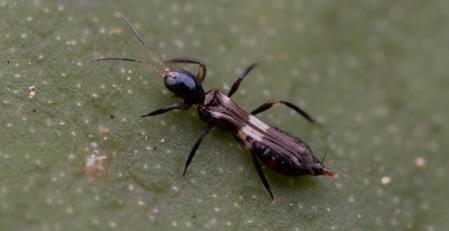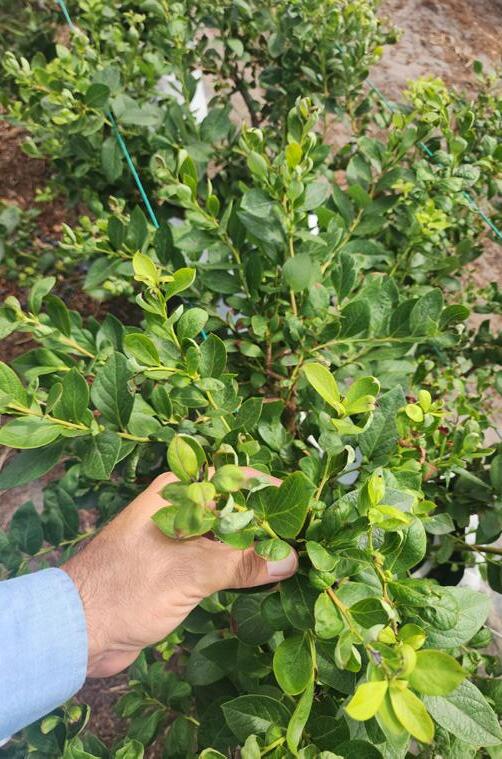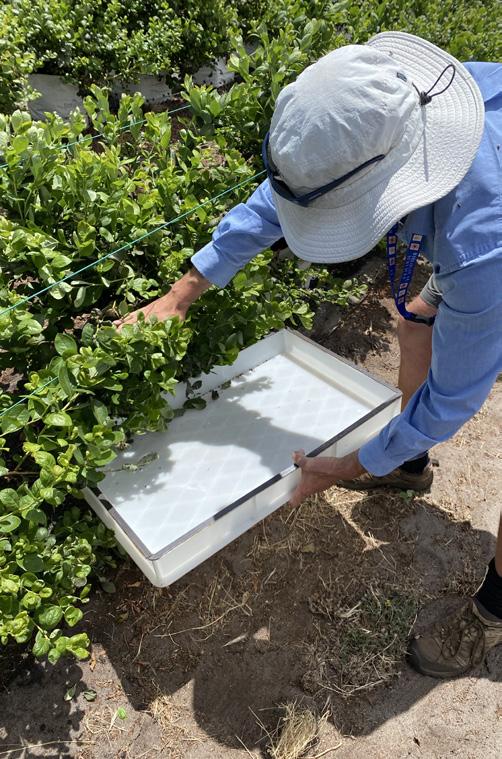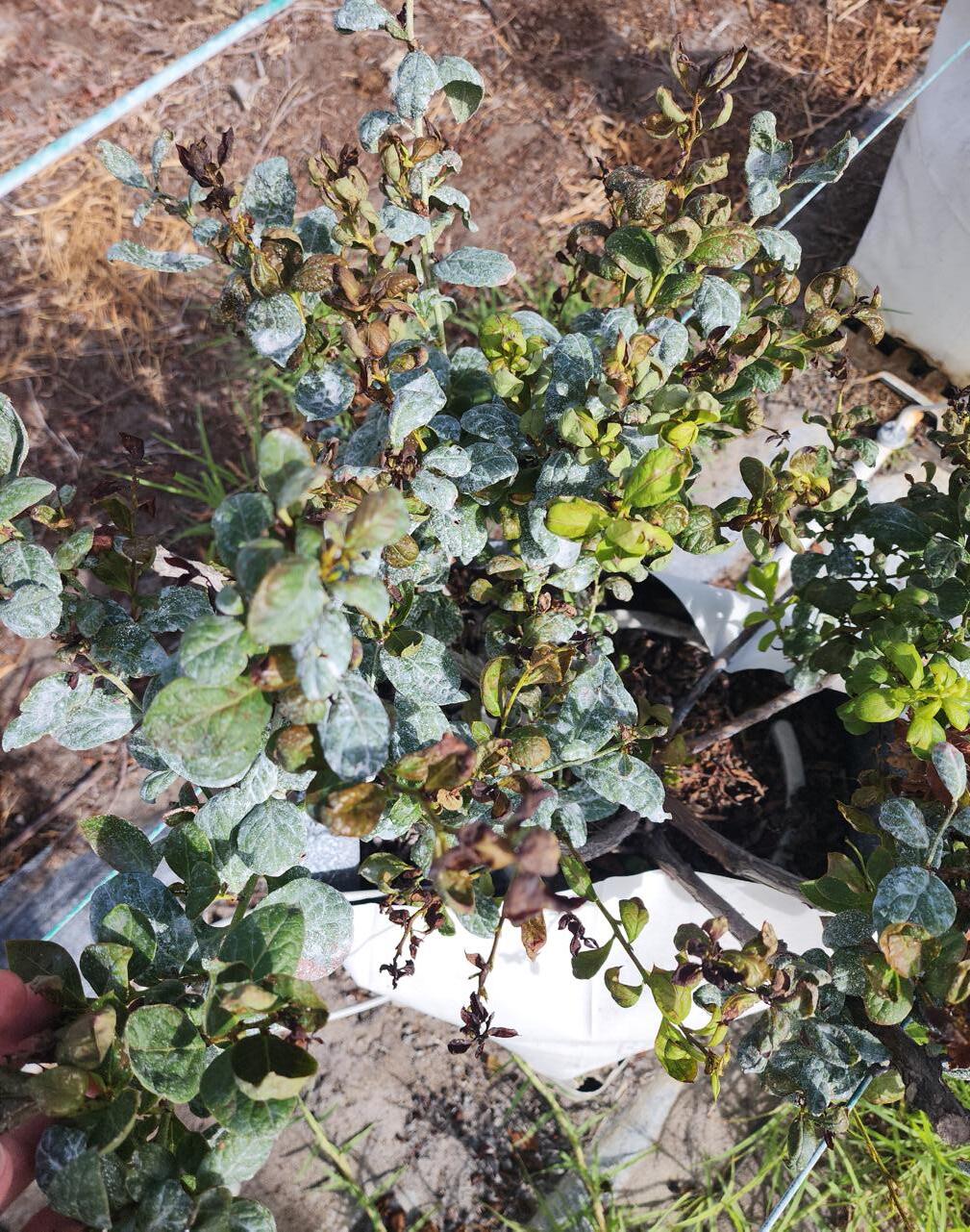
4 minute read
Meet Frankie, a new tool in the battle against foliar thrips
Helen Newman, Berry Industry Development Officer, Agricultural Produce Commission, WA
This article has been produced with thanks to information provided by Biological Services
A chance backyard discovery by Biological Services Entomologist Adam Billsborough has led to the development of Franklinothrips vespiformis, a new ally for Australian growers in the difficult battle to control leaf-dwelling thrips.
Franklinothrips vespiformis occurs in the tropical and subtropical regions of the world, including Australia. It is unique in several aspects:
It is much larger than a typical thrip (2.5-3mm long) and looks like an ant or wasp
The larvae and pupae are bright red
The larvae pupate on the leaf surface inside silk cocoons and the female has pronounced ant-like behaviours
They complete most of their lifecycle on the foliage of the host plant
As an obligate predator, Frankie feeds on all thrips life stages, spider mites, and small arthropods; but they can also survive on pollen


There is no denying that pest thrips cause big problems. However, there are beneficial thrips as well. Predatory thrips can feed on spider mites, aphids, other thrips, moth eggs, and even small caterpillars. Occasionally, these beneficial thrips make a big impact. For example, the naturally occurring Six-Spotted Thrip (Scolothrips sexmaculatus) often helps control Two-Spotted Mite infestations in late summer.
The use of predatory thrips for the biological control of thrips has been investigated for decades, but few are commercially available due to the many other biological control agents that are easier to rear in large numbers.
In 2022, while tending his potted plants at home, Adam Billsborough from Biological Services noticed an ant-like insect feeding on the other thrips. A qualified entomologist, Adam quickly identified it as the native predatory thrip Franklinothrips vespiformis. He reared a small colony of the thrips at home to investigate their feeding habits.
“We are fortunate to have IPM consultants of Adam’s calibre in our team,” says Lachlan Chilman. “Adam’s entomology qualifications and his innate curiosity enabled this discovery.”
In true Aussie fashion, the thrips quickly got the nickname “Frankie”. Adam’s discovery was the first step in the journey of developing Frankie into a commercial product. To confirm and expand on Adam’s discovery, large numbers of Frankie were needed for commercial trials. This task fell to Maricel Malonzo, Head of Research and Development at Biological Services’ Western Australian Insectary. Maricel developed a unique mass-rearing system for Frankie in cooperation with Biobest.



The discovery and development of Frankie as a commercial product for Australian growers comes at an opportune time, particularly for WA berry growers battling Chilli Thrips (Scirtothrips dorsalis). There is still work to be done, but Biological Services is optimistic about Frankie’s potential to control Chilli Thrips.
Trials in blueberries in the Bullsbrook region in 2024 have shown promising results. Less Chilli thrips damage was observed on blueberries in Frankie trials, where no chemical treatments had been used for 12 months, compared with areas receiving conventional spray applications.
Frankie is active at temperatures above 18°C, with development from egg to adult completed in approximately three weeks at 27°C. Females may live for up to two months and lay between 150 to 200 eggs, which are inserted individually inside leaf tissue. A yellowish protective secretion is deposited over the eggs to safeguard them.
Frankie needs a high level of food source for good establishment. They can also detect and follow their food source. Chilli thrips are a good food source. The 2024 trials suggest that pollen-rich banker plants such as ‘Sweet Alyssum’ may assist Frankie to establish before Chilli thrips numbers build up. Trials also showed that careful postharvest pruning where one entire leafy shoot was left on each plant allowed Frankie to remain in the crop and carry over to protect the new growth.
Frankie also feeds on other thrips such as Western Flower Thrips, making it a useful addition to thrips control programs that already rely on predatory mites and Orius.
Biological Services are continuing trials to optimise the use of Frankie in IPM programs for Australian conditions.
For more information visit: www.biologicalservices.com.au
To order Frankie, please contact: info@biologicalservices.com.au



